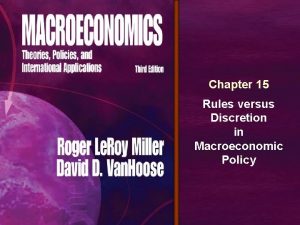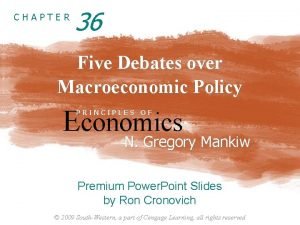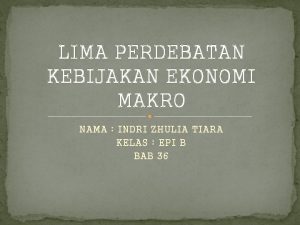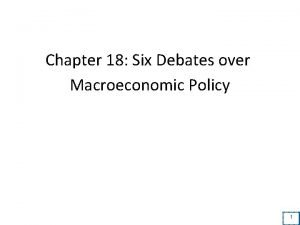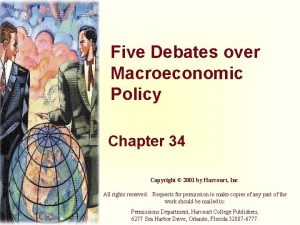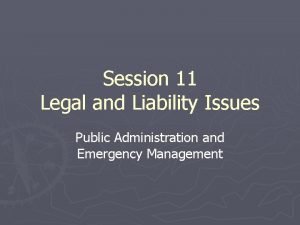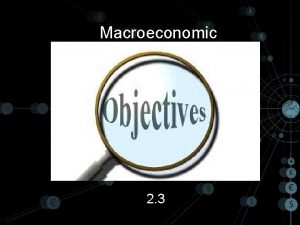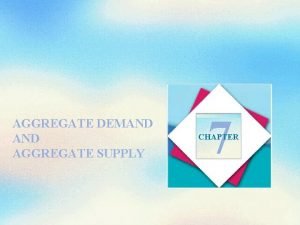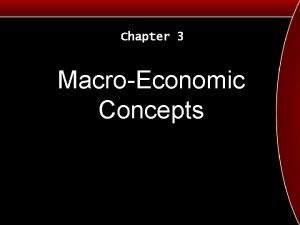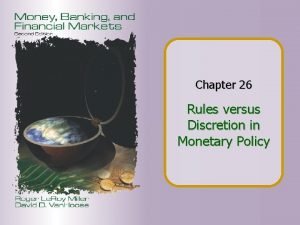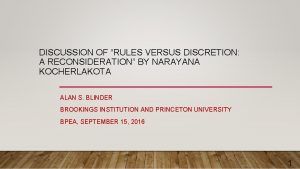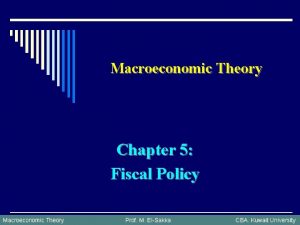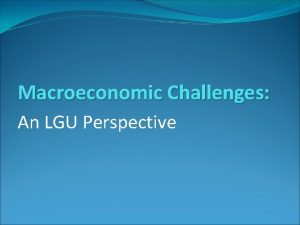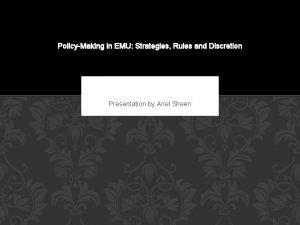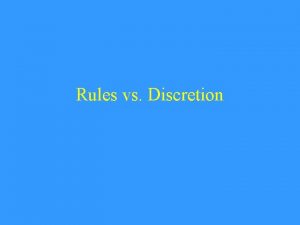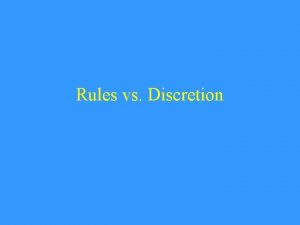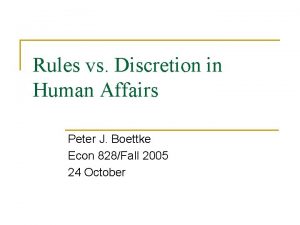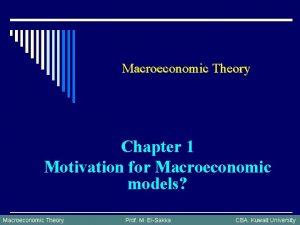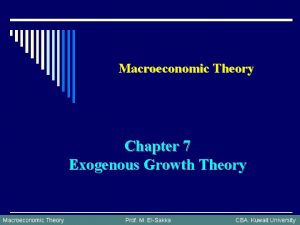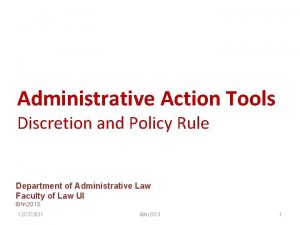Chapter 15 Rules versus Discretion in Macroeconomic Policy













- Slides: 13

Chapter 15 Rules versus Discretion in Macroeconomic Policy

Fundamental Issues 1. What are policy time lags, and how might they cause well-meaning macroeconomic policymakers to destabilize the economy? 2. What are the main arguments favoring discretionary policymaking? 3. Why is policy credibility a crucial factor in maintaining low inflation? 4. How might monetary policy credibility be achieved? Copyright © 2004 South-Western. All rights reserved. 2

Fundamental Issues 4. How might monetary policy credibility be achieved? 5. How might fiscal policy credibility be achieved? 6. What approaches have some nations with fixed exchange rates followed to make their policies credible? Copyright © 2004 South-Western. All rights reserved. 3

How Policy Time Lags Can Make Well-Intentioned Policy Destabilizing Figure 15– 1 Copyright © 2004 South-Western. All rights reserved. 4

Output-Market Equilibrium and Policy Goals Figure 15– 2 Copyright © 2004 South-Western. All rights reserved. 5

Potential and Equilibrium Outcomes of a Macroeconomic Policy Game Figure 15– 3 Copyright © 2004 South-Western. All rights reserved. 6

The Inflation Bias of Discretionary Policymaking Figure 15– 4 Copyright © 2004 South-Western. All rights reserved. 7

Complete Wage Indexation and Discretionary Monetary Policy Figure 15– 5 Copyright © 2004 South-Western. All rights reserved. 8

Annual Inflation Rates in the United States Sources: Economic Report of the President, 2002; Economic Indicators (various issues). Copyright © 2004 South-Western. All rights reserved. Figure 15– 6 9

Central Bank Independence and Average Inflation Key: AUS: BEL: CAN: DEN: FRA: GER: ITA: JAP: Source: Alberto Alesina and Lawrence Summers, “Central Bank Independence and Macroeconomic Performance, ” Journal of Money, Credit, and Banking (May 1993): 151– 162. Copyright © 2004 South-Western. All rights reserved. Austria Belgium Canada Denmark France Germany Italy Japan NET: NZ: NOR: SPA: SWE: SWI: UK: USA: Netherlands New Zealand Norway Spain Sweden Switzerland United Kingdom United States Figure 15– 7 a 10

Central Bank Independence and Inflation Variability Key: AUS: BEL: CAN: DEN: FRA: GER: ITA: JAP: Source: Alberto Alesina and Lawrence Summers, “Central Bank Independence and Macroeconomic Performance, ” Journal of Money, Credit, and Banking (May 1993): 151– 162. Copyright © 2004 South-Western. All rights reserved. Austria Belgium Canada Denmark France Germany Italy Japan NET: NZ: NOR: SPA: SWE: SWI: UK: USA: Netherlands New Zealand Norway Spain Sweden Switzerland United Kingdom United States Figure 15– 7 b 11

Central Bank Independence and Output Volatility Source: Carl Walsh, “Output-Inflation Tradeoffs and Central Bank Independence, ” Federal Reserve Bank of San Francisco Weekly Letter, No. 95 -31, September 22, 1995; Carl Walsh, “Is There a Cost to Having an Independent Central Bank? ” Federal Reserve Bank of San Francisco Weekly Letter, No. 94 -05, February 4, 1994. Copyright © 2004 South-Western. All rights reserved. Figure 15– 8 a 12

Central Bank Independence and the Inflation-Output Trade-off Source: Carl Walsh, “Output-Inflation Tradeoffs and Central Bank Independence, ” Federal Reserve Bank of San Francisco Weekly Letter, No. 95 -31, September 22, 1995; Carl Walsh, “Is There a Cost to Having an Independent Central Bank? ” Federal Reserve Bank of San Francisco Weekly Letter, No. 94 -05, February 4, 1994. Copyright © 2004 South-Western. All rights reserved. Figure 15– 8 b 13
 Rules vs discretion macroeconomics
Rules vs discretion macroeconomics Five debates over macroeconomic policy
Five debates over macroeconomic policy Perdebatan kebijakan makro ekonomi
Perdebatan kebijakan makro ekonomi Six debates over macroeconomic policy
Six debates over macroeconomic policy 5 debates over macroeconomic policy
5 debates over macroeconomic policy Five debates over macroeconomic policy
Five debates over macroeconomic policy What happened after hitler came to power
What happened after hitler came to power Viewer discretion is advised'' warning intro
Viewer discretion is advised'' warning intro Administrative discretion
Administrative discretion Administrative discretion
Administrative discretion The discretion of a man
The discretion of a man Unemployment
Unemployment Short run macroeconomic equilibrium
Short run macroeconomic equilibrium Macroeconomics deals with
Macroeconomics deals with
